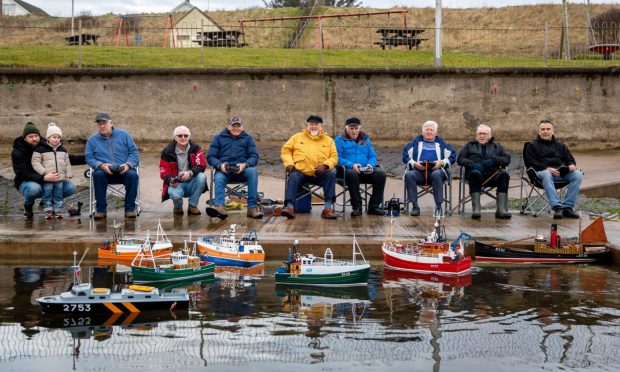A scattering of white-dazzled water-crowfoot on the far side of the river – a lure that proves irresistible, so I gently slip into the tumbling water with snorkel and mask to get a closer look at these watery gems.
The water on this stretch of the upper River Devon in Kinross-shire is cold, but my wet suit offers good insulation, so I relax and let the river flow dictate my course.
Bubbles swirl past my mask as the current rushes its way over rocks and boulders, the water tinged brown from the peaty run-off from the nearby hills.
This is an unforgiving environment, forever under the high-pressure of the river’s momentum.
My body suddenly catches a riffle, sweeping me downstream at what seems like the speed of a torpedo. I grab a boulder to stop myself, swinging round so that my head is now facing upstream. That’s better, I’m back in control now. I grab another rock slightly ahead and pull myself forward against the water’s flow. A trout darts away, there one second and gone the next.
I draw myself up to a trailing clump of water-crowfoot in the middle of the river, where the current is at its strongest. Incredibly many of its flowers are blooming under the water.
Perhaps they do so in the hope that a dry spell might lower the level sufficiently for the flowers to emerge into the breezy air above for pollination. Such conditions might only happen for a short spell, so better to be ready and prepared rather than lose the opportunity.
These crowfoots have created a vast underwater forest, with their long trailing fronds providing a superb place for trout and other creatures to rest and hide. I part some of the waving weedy strings with my hand and see tiny water snails clinging to the leaves.
I release my grip from the rock and let the current carry me diagonally to the far bank, where more water-crowfoot flourishes in a calm margin. Here, their flowers are exposed to air and held aloft on a floating mat of leaves. I am forever fascinated at how nature evolves and adapts, and this water crowfoot is no exception, for its floating leaves are broad and flat, but those under the water are thin and tassel-like, so as to minimise resistance from the water flow.
Another push with my hand and I’m back in the middle of the river again, a small stickleback flickering this way and that ahead of me. It, too, shows superb adaptation, the three spines on its back acting as a deterrent from being gobbled by trout and water birds.
Enthralled by this secret river world, I slowly make my way back to the near bank where I sit for a while in the shallows, watching the riffling water catch the autumn sun and making it sparkle and dance like a thousand mirrors.
Info
Water crowfoot is a member of the buttercup family and there are several different species in the British Isles. Its roots are strong, anchoring the plant firmly to the riverbed.











